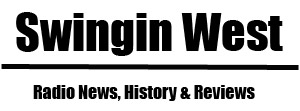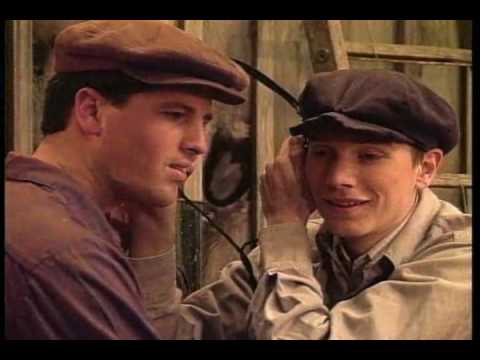Since its inception, radio has captivated the hearts and minds of millions, providing a gateway to the world of news, entertainment, and music. With its ability to transcend physical boundaries and engage listeners through the power of sound, radio has become an enduring symbol of connectivity and cultural influence. From the historic milestones that shaped its evolution to the enchanting tales that unfolded through its broadcasts, radio has left an indelible mark on our collective consciousness.
So, join us on this thrilling expedition as we unravel the mysteries and celebrate the timeless allure of radio!

1. The First Commercial Radio Broadcast
On November 2, 1920, station KDKA in Pittsburgh, Pennsylvania, made history by airing the first commercial radio broadcast. With a handful of dedicated radio enthusiasts at the helm, they covered the presidential election results between Warren G. Harding and James M. Cox,
The decision to broadcast the election results commercially was not without its challenges. Radio technology was still in its infancy, and there were limited receivers in homes. However, KDKA managed to overcome these obstacles, captivating listeners who gathered around their radios in anticipation.
As the crackling voices of radio announcers reverberated through the airwaves, people across the region experienced a profound sense of connection. They could now witness history unfolding in real-time, courtesy of this revolutionary medium. The impact was immediate and far-reaching, propelling radio into the forefront of mass communication and paving the way for its remarkable growth and influence in the years to come.
The first commercial radio broadcast by KDKA forever transformed the radio landscape, demonstrating its power to inform, entertain, and unite people across vast distances. It sparked a wave of innovation and experimentation as radio stations sprouted up, fostering a new era of broadcasting and setting the stage for the golden age of radio.
Video: 100 years of commercial radio broadcasting. The birth of radio. English version
2. The World’s Oldest Radio Station
Radio station 2MT, located in Writtle, England, holds the distinction of being the world’s oldest continuously operating radio station. It began broadcasting on February 14, 1922, and has been on the air for over a century.
2MT owes its existence to the pioneering work of Peter Eckersley, an accomplished radio engineer and inventor. Inspired by the newfound potential of radio as a means of mass communication, Eckersley set out to establish a radio station that would captivate listeners and push the boundaries of what was possible.
Throughout its storied history, 2MT has witnessed incredible advancements in radio technology. From the early days of cumbersome equipment and limited broadcasting range to the advent of more powerful transmitters and the shift towards digital broadcasting, the station has evolved and adapted to stay at the forefront of radio innovation. Today, 2MT continues to operate as a living testament to the enduring power of radio, bridging the gap between radio’s past and present.
3. The FM Radio Revolution
FM (Frequency Modulation) radio, introduced in the 1930s, revolutionized radio broadcasting by offering improved sound quality and reduced interference compared to its predecessor, Amplitude Modulation (AM) radio. Unlike AM (Amplitude Modulation) radio, which varied the amplitude of the radio wave to transmit audio signals, FM radio employed a different approach. It modulated the frequency of the wave, allowing for a more robust and reliable transmission of audio content. This fundamental shift in modulation technique brought forth several notable advantages.
One of the key benefits of FM radio was its ability to deliver enhanced sound quality. By modulating the frequency, FM radio significantly reduced the interference and static commonly associated with AM radio. This resulted in clearer reception and improved fidelity, allowing listeners to enjoy a richer and more immersive audio experience.
The introduction of FM radio not only transformed the technical aspects of radio broadcasting but also revolutionized the listening habits and preferences of audiences. Listeners gravitated towards FM stations for their superior sound quality and the ability to tune in to specialized music genres and programs. FM radio became a cultural force, shaping the way people consumed music and fostering the growth of radio as a medium of entertainment and information.
4. The Birth of Mickey Mouse
In 1930, Mickey Mouse made his radio debut on The Mickey Mouse Theater of the Air, a weekly radio program sponsored by Pepsodent toothpaste. Although Walt Disney himself did not lend his voice to Mickey on the radio show, this marked a significant milestone as it introduced the iconic character to a vast audience through the medium of radio. Listeners were treated to original stories and thrilling adventures featuring Mickey Mouse, captivating their imaginations with the same charm and humor that had made him a sensation in animated films.
The radio show played a vital role in expanding Mickey Mouse’s popularity beyond the silver screen. It allowed people of all ages and backgrounds to connect with the beloved character in a new and immersive way. As families gathered around their radios, they became enthralled by the escapades of Mickey Mouse and his friends, further solidifying his status as a cultural icon not only in the realm of animation but also in the dynamic world of radio entertainment.
5. The Iconic “War of the Worlds” Broadcast
On October 30, 1938, Orson Welles and his Mercury Theatre on the Air presented a radio adaptation of H.G. Wells’ “War of the Worlds.” The broadcast simulated a series of news bulletins reporting an alien invasion in real-time, complete with dramatic sound effects and realistic news updates. With a masterful blend of creativity and realism, the broadcast transported listeners into a world under attack by extraterrestrial forces. Using simulated news bulletins, talented voice actors, and convincing sound effects, the program presented an immersive experience that captured the imagination of its audience.
The immersive nature of the broadcast led to widespread panic and confusion among listeners who mistook the fictional account for a genuine news event. This infamous incident highlighted the immense power of radio to create a sense of urgency and engage audiences in such a way that it blurred the lines between fiction and reality. The “War of the Worlds” broadcast remains one of the most remarkable and controversial moments in radio history, demonstrating the profound impact that radio can have on public perception and behavior.
6. Presidential Debates
The first-ever presidential debate between John F. Kennedy and Richard Nixon in 1960 was not only televised but also broadcast on radio. Many radio listeners who didn’t have the luxury of watching the visual component of the debate, they relied solely on the power of audio to form their impressions of the candidates. The absence of visual cues forced these listeners to focus solely on the content of the candidates’ words, their tone of voice, and the overall delivery. This emphasized the significance of effective oratory skills and the ability to convey messages persuasively through sound alone.
The radio broadcast of the Kennedy-Nixon debate allowed a wider audience to engage with the political discourse and participate in the democratic process. It highlighted the role of radio as a medium of accessibility, enabling listeners to stay informed and make informed decisions, even in the absence of visual stimuli. This dual broadcast showcased the influence of both television and radio in shaping public perception during crucial moments in political history.
7. The Radio-Controlled Car Stunt
In 1938, a clever radio stunt took place during a car race at Madison Square Garden in New York City. A radio-controlled car, fitted with a miniature radio transmitter, made its daring entry onto the race track. But what made this moment truly astonishing was the fact that there was no driver inside the car.
As the radio-controlled car zoomed around the track with precision and finesse, the spectators couldn’t help but be astounded. How was this possible? The tiny radio transmitter embedded within the car allowed it to be operated remotely, responding to commands sent through the airwaves. The crowd was left in awe, witnessing this early display of radio-controlled technology.
This groundbreaking stunt at Madison Square Garden marked a significant milestone in the development of remote-controlled vehicles. It showcased the immense potential of radio-controlled technology and set the stage for future advancements that would revolutionize industries such as entertainment, transportation, and even warfare. The radio-controlled car stunt became a symbol of human ingenuity, sparking imagination and paving the way for a future where remote-controlled vehicles would become an integral part of our lives.
8. How Radio Reached Australia
In the early 1920s, a radio enthusiast named Ernest Fisk, who was based in Sydney, Australia, was determined to bring the wonders of radio to the continent. However, at that time, there were no radio stations in Australia, and the British Broadcasting Company had a monopoly on wireless communication.
Undeterred, Fisk embarked on a daring venture. He set up a receiving station on his property and, using a powerful transmitter, established a wireless link with the United States. This enabled him to capture radio signals from American stations and rebroadcast them in Australia. This groundbreaking achievement made Fisk the first person to successfully transmit radio signals across such a vast distance.
Fisk’s efforts laid the foundation for the development of radio in Australia. His pioneering work led to the establishment of the first official radio station in Australia, 2SB (now known as 2BL), which began broadcasting in 1923. Fisk’s determination and ingenuity played a pivotal role in bringing the marvels of radio to the shores of Australia, forever transforming the country’s communication landscape.
9. The Longest Radio Show Ever
In 2016, Stefani Dias and Tim Lihoreau made radio history by hosting the longest continuous radio show ever recorded. They kept listeners entertained for over 8 days straight with a marathon show that lasted a remarkable 205 hours. This incredible feat on Classic FM in the United Kingdom blended music, conversations, and interviews, creating an unforgettable experience for the audience. The dedication and talent of Stefani Dias and Tim Lihoreau showcased the power of radio to captivate and engage listeners for an extended period, setting a record that stands as a testament to the enduring appeal of this medium.
10. How Many People Are Listening To The Radio Every Day?
Even today, the radio remains a powerful and ubiquitous medium that continues to captivate millions of listeners worldwide. According to the report published by the World Radio Day website in 2021, an estimated 3.9 billion people, representing around 54% of the global population, tune in to the radio each day.
This figure is truly remarkable, highlighting the enduring popularity and influence of radio as a mass communication platform. Despite the rise of digital media and the proliferation of streaming services, radio has managed to maintain its relevance and reach a vast audience across different regions and cultures.

